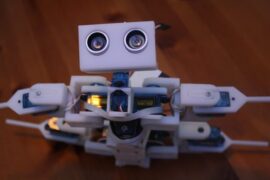Rockers. Triggers. Directional Pads. No matter how you use them, nothing yells control quite like physical buttons do. Unfortunately, incorporating working analog controls into a piece of hardware is more often than not significantly more difficult than it sounds.
From an industrial design perspective, buttons can both be a blessing and a burden. While size, materials and color can help communicate usability and even add interest to a form, aligning a button design with awkward PCB boards, wiring and tricky internal structures can just as well take the fun out of “designing”.
“Buttons are a chance for both comfortable ergonomics and increased intuition in your product design,” explains design engineer Christian Brown. “Large buttons surrounded by smaller ones indicate relative importance. A volume rocker button indicates a level going up and down. A single big red button says, ‘PANIC!’.”

More recently, Brown took a deep dive into how designers and engineers can better incorporate buttons into hardware as a way of showcasing features and adding a new layer of interaction to their product designs.
“At the triple intersection between aesthetics, ergonomics and functionality, button controls provide an amazing opportunity to creatively showcase great industrial design,” he explains. “Industrial design is about interaction, the relationship between human and machine, and for many products, that interaction is most intimate where the user reaches out to touch the design: the buttons.”

Whether you’re looking how to better incorporate a two-point rocker or a directional pad into your next project, his entire breakdown is worth checking out.






